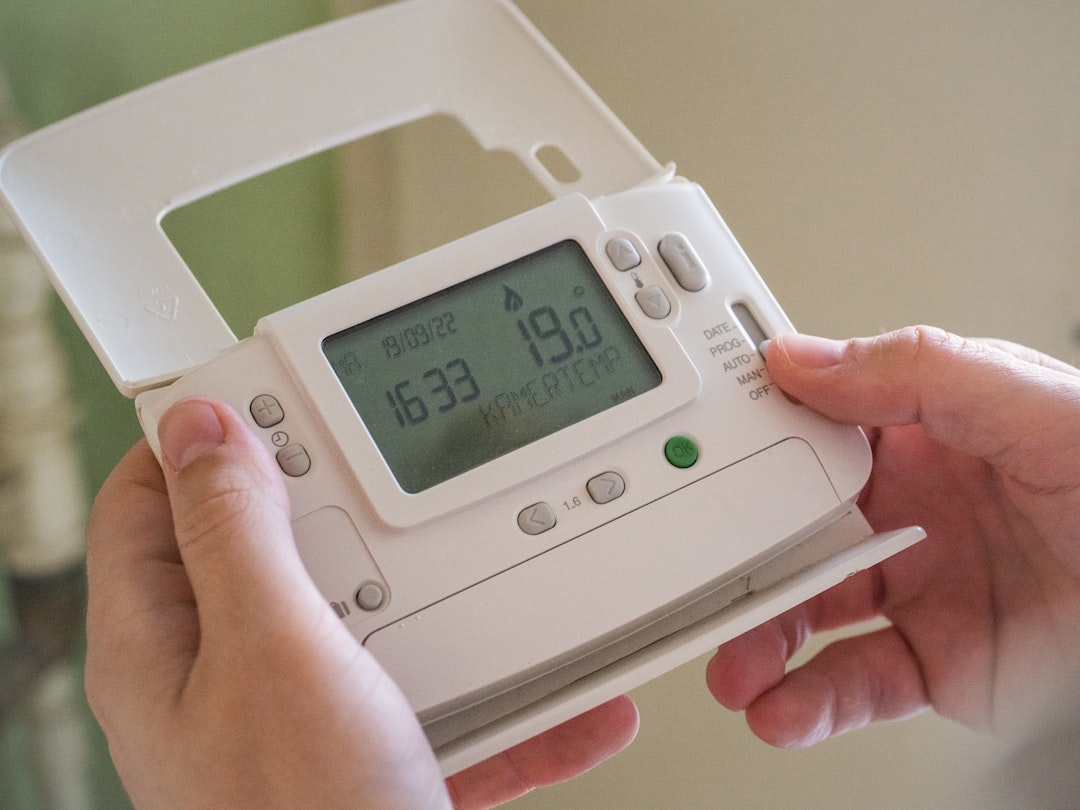
California HVAC System Maintenance: Optimize Efficiency
California's diverse climate poses unique challenges for HVAC systems. From the dry, hot summers of the south to the damp, cool winters of the north, HVAC systems must adapt to a wide range of conditions. Unfortunately, many systems struggle to cope, leading to inefficiencies and frequent breakdowns. In this article, we'll explore why your HVAC system may be underperforming in California's climate and provide practical solutions to keep it running smoothly.

California's climate is as varied as its landscapes. Coastal regions experience mild temperatures with high humidity, while inland areas can see scorching heat in summer and chilly nights in winter. This variability can put a strain on HVAC systems, which need to work harder to maintain comfortable indoor temperatures. The demand for consistent indoor climate control, combined with these fluctuating external conditions, often results in increased energy consumption and wear on HVAC components.
Hot Summers and Cold Winters
In areas like Los Angeles and San Diego, summer temperatures can soar, causing HVAC systems to run continuously. This constant use can lead to wear and tear, increasing the likelihood of system failures. The intense heat not only affects the components of the HVAC system but also tests its ability to efficiently cool larger spaces. Conversely, regions like San Francisco and Sacramento face cold winters, requiring efficient heating solutions. These areas demand systems that can quickly adjust to dropping temperatures without straining energy resources or compromising comfort.
High Humidity Levels
Coastal areas often deal with high humidity, which can make your home feel warmer and cause your HVAC system to work overtime. Humidity can also lead to moisture buildup in ducts and other components, potentially causing damage over time. This moisture can foster mold growth and impact air quality, posing health risks. High humidity also complicates the task of dehumidifying indoor air, further challenging HVAC systems already stretched thin by cooling demands.
Common HVAC Issues in California
Insufficient Cooling or Heating
One of the most common complaints among California homeowners is that their HVAC system doesn't adequately cool or heat their home. This issue can arise from various factors, including system age, size, and maintenance practices. An older system may lack the energy efficiency of modern units, struggling to keep pace with demand. Additionally, improperly sized systems can fail to reach desired temperatures effectively, leading to discomfort and dissatisfaction.
Frequent Cycling
If your system frequently turns on and off, it may be working inefficiently. This issue, known as short cycling, can occur when your system is too large for your home or if there are issues with the thermostat. Short cycling not only reduces the lifespan of the system but also spikes energy consumption, as constant starting and stopping require more power than steady operation. Improper thermostat settings or location can compound these problems, leading to inconsistent home temperatures and increased energy bills.
High Energy Bills
An inefficient HVAC system can lead to skyrocketing energy bills. If you notice a sudden increase in your utility costs, it may be time to evaluate your system's performance. Energy inefficiency often results from outdated technology, poor maintenance, or improper system usage. Addressing these issues can significantly reduce energy consumption and associated costs, offering long-term financial benefits.
How to Fix HVAC Issues in California

Regular Maintenance
Routine maintenance is crucial for keeping your HVAC system in top condition. Regular check-ups can help identify potential problems before they become major issues. Consider scheduling bi-annual maintenance checks with a professional HVAC technician. These visits can include cleaning components, checking for leaks, and ensuring optimal system settings. Proactive maintenance can prevent costly repairs and system downtime, enhancing efficiency and reliability.
System Upgrades
If your system is outdated or struggling to meet your home's needs, it may be time for an upgrade. Modern HVAC systems are designed to be more energy-efficient, saving you money in the long run. Look for systems with high SEER (Seasonal Energy Efficiency Ratio) ratings for optimal performance. Upgrading can also provide better humidity control, quieter operation, and advanced features like smart thermostats, which enhance user convenience and comfort.
Proper Insulation
Ensuring your home is well-insulated can significantly improve your HVAC system's efficiency. Good insulation helps maintain a consistent indoor temperature, reducing the workload on your system. By minimizing heat exchange with the outdoors, insulation allows your HVAC system to operate less frequently, prolonging its lifespan. It also helps in achieving uniform temperatures across rooms, eliminating hot or cold spots within your home.
Use a Programmable Thermostat
A programmable thermostat can help you manage your home's temperature more effectively. By setting your thermostat to adjust the temperature when you're away or asleep, you can reduce energy usage and prolong the life of your HVAC system. Smart thermostats offer additional benefits, such as remote access and learning capabilities that adapt to your schedule. These features provide greater control over energy consumption and improve overall system efficiency.
HVAC Maintenance Tips for California Homeowners

by Arthur Lambillotte (https://unsplash.com/@artlambi)
Change Filters Regularly
One of the simplest ways to keep your HVAC system running smoothly is to change the air filters regularly. Dirty filters can restrict airflow, causing your system to work harder and increasing the risk of breakdowns. Regularly replacing filters ensures clean air circulation and prevents dust buildup that can impair system components. It also contributes to better indoor air quality, reducing allergens and pollutants in your home.
Keep Vents and Ducts Clean
Dust and debris can accumulate in your vents and ducts, reducing airflow and impacting your system's efficiency. Make sure to clean these areas regularly to ensure optimal performance. Periodic duct cleaning can also uncover and address potential issues like mold or pest infestations. Keeping ducts clear not only enhances system efficiency but also promotes healthier indoor air conditions.
Monitor Outdoor Units
Outdoor units can become obstructed by leaves, dirt, and other debris. Regularly check and clean the area around your unit to prevent blockages and maintain airflow. Ensuring adequate clearance around the unit improves its efficiency and prolongs its lifespan. Additionally, keeping the outdoor unit clean helps prevent overheating and reduces the risk of component failure.
Seal Duct Leaks
Leaky ducts can cause your HVAC system to lose efficiency. Inspect your ductwork for any signs of leaks and seal them promptly to prevent energy loss. Proper sealing ensures that conditioned air reaches its intended destination without loss, improving comfort and efficiency. Sealing ducts can also reduce energy bills and enhance system performance by minimizing strain on the HVAC components.
When to Call a Professional
While some maintenance tasks can be handled by homeowners, others require professional expertise. If you experience persistent issues with your HVAC system, it's best to consult a qualified technician. They can perform a comprehensive assessment and recommend solutions tailored to your specific needs. Professionals have the tools and experience necessary to diagnose and fix complex problems that might be beyond a homeowner's capability.
Signs You Need Professional Help
Unusual noises coming from your system
Persistent temperature inconsistencies
Poor air quality in your home
Continuous system cycling
These signs indicate underlying issues that could lead to more significant problems if not addressed promptly. A professional can identify the root cause and suggest appropriate remedies, ensuring your system operates efficiently.
Conclusion
California's unique climate presents specific challenges for HVAC systems, but with proper maintenance and timely upgrades, you can ensure your system operates efficiently year-round. By understanding the common issues and implementing the solutions outlined in this article, you can extend the life of your HVAC system and enjoy a comfortable home environment, no matter the weather outside. Regular attention to your HVAC needs can also lead to substantial energy savings, contributing to a more sustainable lifestyle.
Remember, regular maintenance and professional guidance are key to a well-functioning HVAC system. Don't hesitate to reach out to an expert if you're facing persistent issues. Your comfort—and your wallet—will thank you. Investing in your HVAC system today will pay off in comfort, efficiency, and cost savings tomorrow.